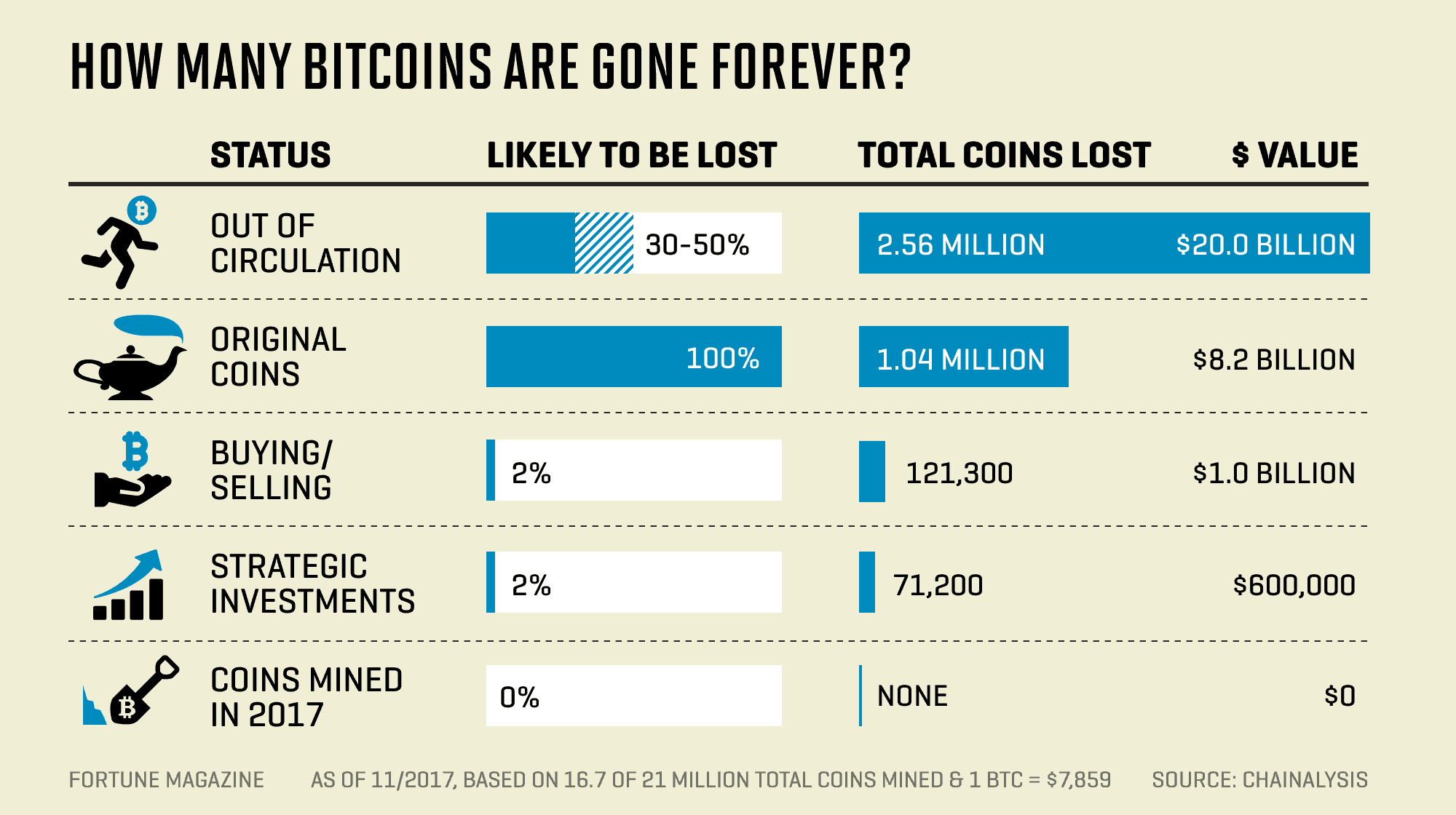Blockchain analysis company Chainalysis recently released a study which states that 23% of Bitcoins in current circulation may never be recovered.
Obviously, the exact amount of Bitcoin that have either been collected or lost can’t be determined, which is why the digital forensics company have placed both a lower and upper estimate on the figure they released. According to the company, the mined Bitcoin that have been lost reach up to between 17% and 23%, which is equivalent to between 2.78 and 3.79 million in terms of definite BTC.
Presumably, these lost Bitcoins came from its early days, back when it wasn’t worth much, as opposed to its price reaching up to $9,000 today. One such example is this article by Daily Mail where a tech writer by the name of Campbell Sison threw out a hard drive containing Bitcoin that is now worth around 4.8 billion.
“At the start of 2010, Bitcoin trading wasn’t even really a thing. It was hard to find anywhere that would accept BTC,” the writer stated, saying that he was slightly annoyed when he found out.
Going back to the study, Chainalysis also utilizes age and transaction metrics to identify which of these mined digital coins have been in stagnation for quite a while. The company’s findings were then categorized into five, which is:
- Bitcoins that were mined at the start of 2017
- Satoshi’s (Bitcoin founder) original one million coins
- Strategic investments
- Selling/buying
- Bitcoins that have not moved in the last 2-7 years
Using their precise methodology that is kept secret, the company came out with these results:
- No Bitcoin in 2017 that has been mined is lost
- 4% of Bitcoin used for strategic investments and/or buying selling have been lost
- All of Satoshi’s one million coins are gone
- 30-50% percent of Bitcoins that have been stagnant in the last two years are also lost
This last statistic is quite tricky to really measure, because it’s mainly hard to deduce which of the wallets have private keys that has long been lost, and which wallets have owners that are just waiting for an opportunity to finally use their digital assets. Nonetheless, events like hard forks cause holders to move their coins, thus getting them recognized as still in constant circulation.
All of these figures, however, only apply to Bitcoin that have been lost and doesn’t include ones that have been stolen. This is because the thief now holding the stolen coins will always be using them one way or another, putting the coins back into circulation once they do.
Now with all of these lost coins, the consequences will show up sooner or later, most especially with the total supply being fixed, meaning new coins can’t be mined above the 21 million cap. This will eventually result in Bitcoin’s price climbing higher in the long run.
In an online article by Fortune, Senior Chainalysis economist Kim Grauer had something to say about the increased scarcity of the digital currency, its future implications, and whether these that are lost have already been priced by the current market. Grauer says:
“That is a very complex question. On the one hand, direct calculations about market cap do not take lost coins into consideration. Considering how highly speculative this field is, those market cap calculations may make it into economic models of the market that impact spending activity. Yet the market has adapted to the actual demand and supply available – just look at exchange behavior. Furthermore, it is well known monetary policy procedure to lower or increase fiat reserves to impact exchange rates.”






